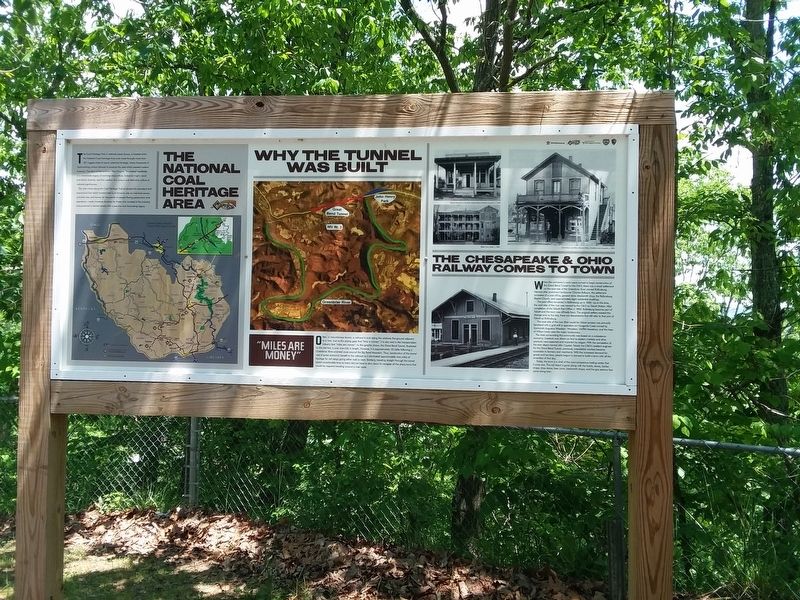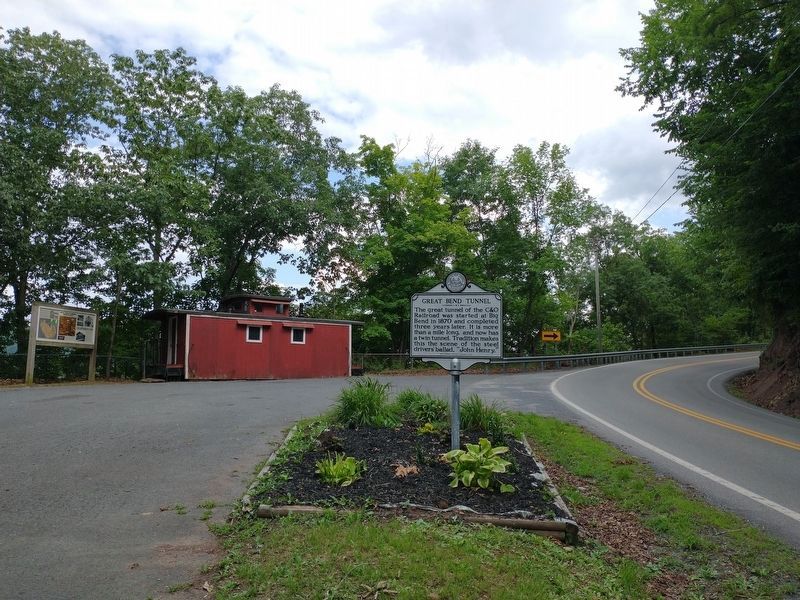Talcott in Summers County, West Virginia — The American South (Appalachia)
Why The Tunnel Was Built
The national coal heritage area
The Coal Heritage Trail, a national scenic byway, is located within the National Coal Heritage Area and winds through more than 187 rugged miles of scenic industrial heritage, where thousands of hard-working miners labored to produce the coal which created modern America. The story of the southern West Virginia "smokeless" coalfields is a remarkable legacy of working-class culture, industrial might, racial and ethnic diversity, and the creation of a unique and distinctive culture of national significance.
The coal mines along the Coal Heritage Trail produced the abundant and economical fuel which transformed rural America into an industrial power, provided jobs and homes for thousands of people fleeing persecution and oppression, made immense fortunes for those who invested in the industry, and produced a storied society with a peculiar and fascinating legacy.
Why The Tunnel Was Built
Often, in mountainous terrain, a railroad is built along the relatively flat ground adjacent to a river. Just as the saying goes that "time is money", it is also said in the transportation industry that "miles are money". As this graphic shows, the Great Bend Tunnel, illustrated by the red line, is over one-mile in length. However, it is approximately 10-miles following a Greenbrier River-oriented route around the Big Bend Mountain. Thus, construction of the tunnel was of great economic benefit to the railroad as it eliminated approximately nine miles of haulage for rail cargo going either east or west. Similarly, traveling straight through the tunnel saved considerable time as trains did not have to slow down to navigate all the sharp turns that would be required traveling around a river route.
The Chesapeake & Ohio Railway Comes to Town
When the contractor's work crews arrived to begin construction of the Great Bend Tunnel for the C&O, there was a small settlement on the east side of the Greenbrier River named Rollinsburg. Named after prominent landowner Charles Rollyson, the settlement consisted of a post office, general store, blacksmith shop, the Rollynsburg Baptist Church, and approximately eight residential dwellings.
The post office remained in Rollinsburg up to 1882. Up to this time, the west side of the river was named by the C&O as Talcott Station. After completion of the Talcott Post Office in 1882, Rollinsburg became part of Talcott and the town was officially born. The original settlers resisted this change and, to this day, there are descendants that still refer to that part of Talcott as Rollinsburg.
The west side of the river (that would be Talcott proper) was primarily farmland with a grist mill in operation on Hungards Creek owned by Zachariah Augustus Woodson. Woodson, Griffith Meadows, and the heirs of Wilson Lively were the major landowners.
The area surrounding the community was based on a subsistence economy. Livestock was driven on foot to eastern markets and other products were exported and imported by wagon. With the completion of the train depot named after Captain Talcott, the C&O's resident engineer for the Great Bend Tunnel, previously unavailable markets became accessible to farmers and merchants. With the increased demand for goods and services, people began in earnest to build a town with all the amenities of that day.
Today, the town is a shell of the once prosperous trading center that it once was. The rail depot is gone along with the hotels, stores, barber shops, shoe stores, beer joints, blacksmith shops, and the gas stations that came along later.
Topics. This historical marker is listed in these topic lists: Industry & Commerce • Railroads & Streetcars. A significant historical year for this entry is 1882.
Location. 37° 38.934′ N, 80° 46.047′ W. Marker is in Talcott, West Virginia, in Summers County. Marker is on West Virginia Route 3/12, 0.2 miles north of Huston Road, on the right when traveling east. On the grounds of the Old John Henry Historical Park. Touch for map. Marker is in this post office area: Talcott WV 24981, United States of America. Touch for directions.
Other nearby markers. At least 8 other markers are within walking distance of this marker. Here Stood a Statue of John Henry (here, next to this marker); Great Bend Tunnel (here, next to this marker); a different marker also named Great Bend Tunnel (a few steps from this marker); The Legend Of John Henry (about 300 feet away, measured in a direct line); Concrete & Cut Stone Foundations (about 300 feet away); John Henry (about 300 feet away); Great Bend Tunnel Construction (about 300 feet away); John Henry In Fiction (about 300 feet away). Touch for a list and map of all markers in Talcott.
Credits. This page was last revised on December 4, 2022. It was originally submitted on January 20, 2021, by Craig Doda of Napoleon, Ohio. This page has been viewed 208 times since then and 24 times this year. Last updated on December 3, 2022, by Bradley Owen of Morgantown, West Virginia. Photos: 1. submitted on January 20, 2021, by Craig Doda of Napoleon, Ohio. 2. submitted on November 22, 2022, by Tom Bosse of Jefferson City, Tennessee. • Devry Becker Jones was the editor who published this page.

